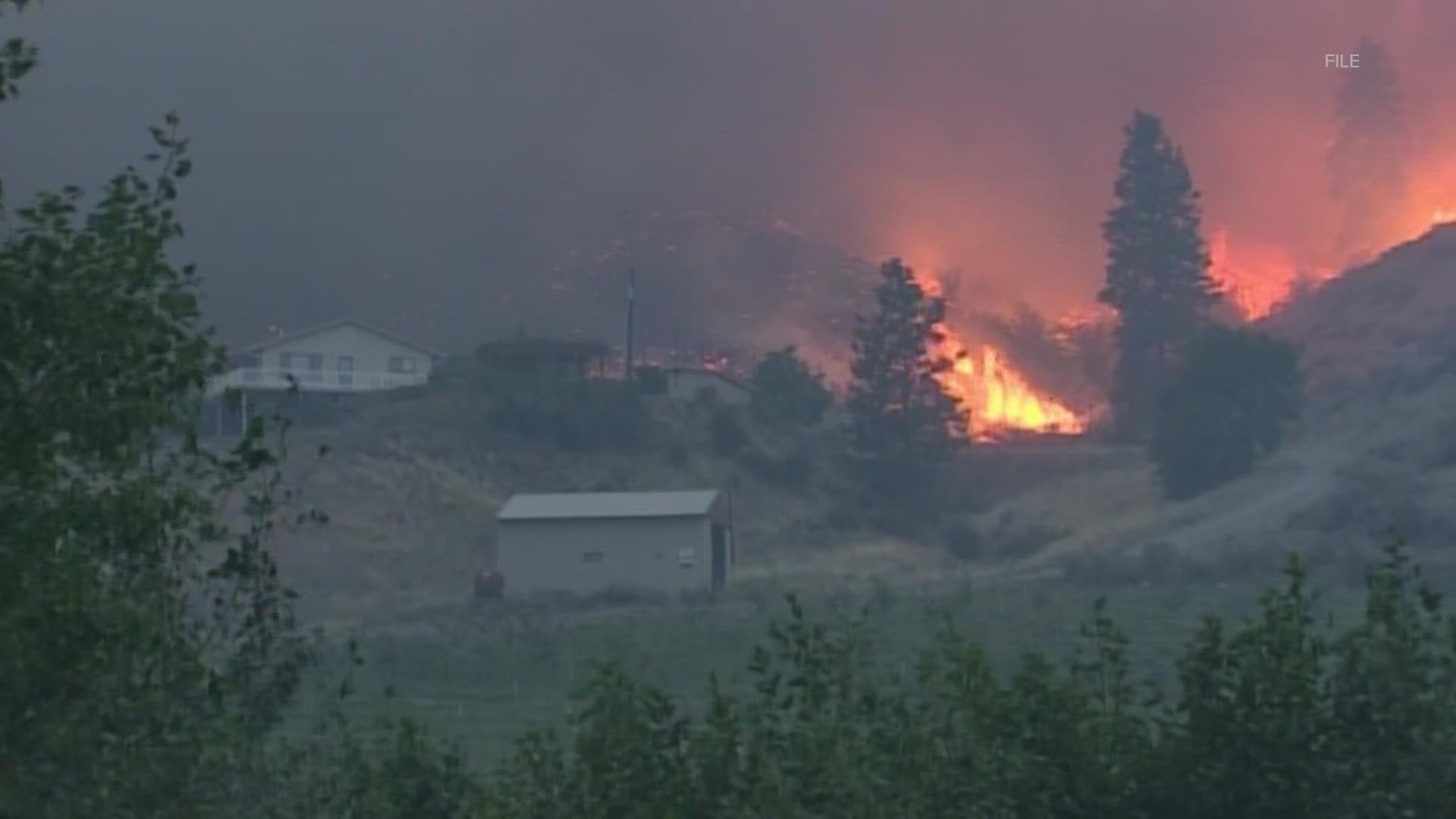SEATTLE — The Department of Natural Resources (DNR) is already gearing up for wildfire season in 2022. The University of Washington forecasts a “normal” wildfire season ahead, but even so, fire activity is still expected on both sides of the Cascades.
“This time of year is what we call our training season and our readiness season,” said DNR Assistant Division Manager of Plans and Information Angie Lane.
The department is spending the spring months readying their personnel and deciding where they’re going to send resources during the summer months. The DNR is also acquiring more firefighting resources through contracts and completing any agreements they have with cooperators and partners.
It’s hard to forecast specifically what this year’s fire season will be like, but early conditions show it will likely be a “normal” season – not extraordinarily different from the past couple of years. Still, that “normal” baseline has been changing.
"As we know, even the normal fire season here includes a lot of fire activity," said Brian Harvey with the University of Washington School of Environmental and Forest Sciences.
An increasing amount of area burned in the western US over the last several decades is strongly linked to climate as conditions become warmer and drier, Harvey said.
"Not surprisingly that's creating conditions that are very conducive for fires spreading across the landscape,” Harvey said.
Another driver of major wildfires is fewer small fires occurring in fire-prone landscapes.
“Fire plays an ecological role in supporting the forest, grassland, shrubland, throughout western North America,” Harvey said.
In dry forests, frequent fires clear out fuel buildups like dead branches, brush and excess vegetation. If fires happen less often, more fuel accumulates, meaning when a fire does spark, they’re more intense than it otherwise would have been, Harvey said.
In anticipation of fire season, the DNR is currently working to hire and fill positions the department added with new funding from the legislature. Lane says it is also prepared with 120 engines ready to go, along with 10 medium helicopters for delivering water, a helicopter for observation, single-engine air tankers, and other technology.
While peak fire season is months away, DNR staff have recently fought some small fires, likely caused by debris burning, and are asking people to be fire aware.
“They're small fires, but we're still pursuing and chasing those fires,” Lane said. “We really want the public to pay attention to things like debris burning, make sure they're doing it safely. Help us help them. Keep fires small this spring, let's not have bigger fires than we need to this year.”
To learn more about how to prepare your home for wildfires, click here.

